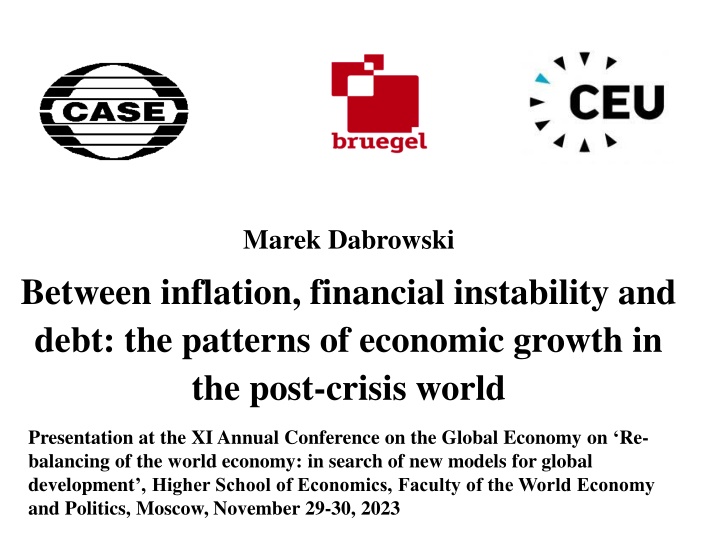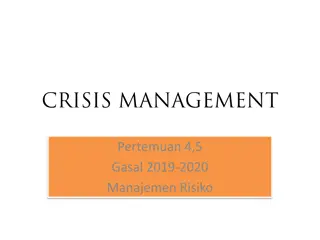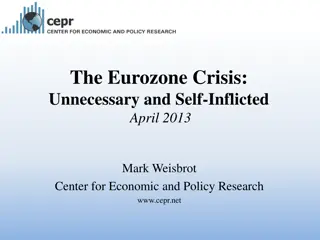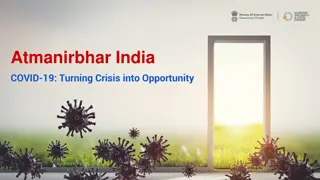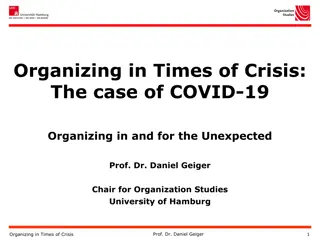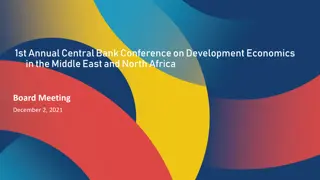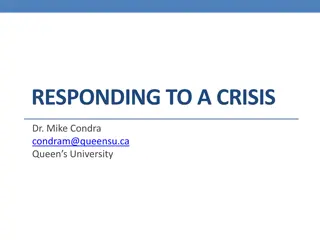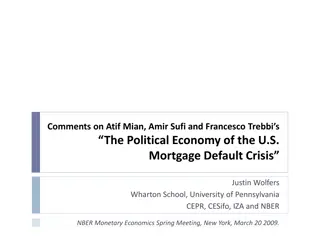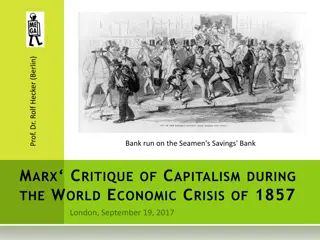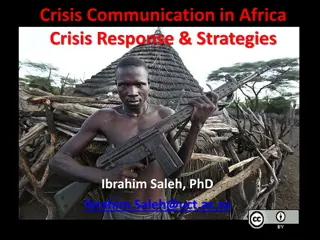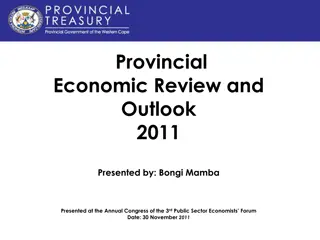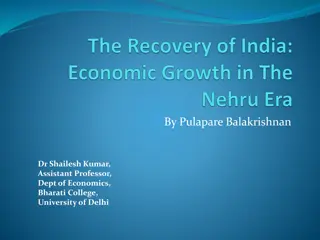Economic Growth Patterns in the Post-Crisis World
Marek Dabrowski presents insights into the impact of inflation, financial instability, and debt on global economic growth post-crisis. This presentation, delivered at the XI Annual Conference on the Global Economy, focuses on new models for global development amidst the challenges of rebalancing the world economy.
Download Presentation

Please find below an Image/Link to download the presentation.
The content on the website is provided AS IS for your information and personal use only. It may not be sold, licensed, or shared on other websites without obtaining consent from the author.If you encounter any issues during the download, it is possible that the publisher has removed the file from their server.
You are allowed to download the files provided on this website for personal or commercial use, subject to the condition that they are used lawfully. All files are the property of their respective owners.
The content on the website is provided AS IS for your information and personal use only. It may not be sold, licensed, or shared on other websites without obtaining consent from the author.
E N D
Presentation Transcript
Marek Dabrowski Between inflation, financial instability and debt: the patterns of economic growth in the post-crisis world Presentation at the XI Annual Conference on the Global Economy on Re- balancing of the world economy: in search of new models for global development , Higher School of Economics, Faculty of the World Economy and Politics, Moscow, November 29-30, 2023
Plan of presentation Focus on AEs and large EMEs Short-term perspective Restrictive monetary policy lower inflation No immediate global financial stability risk Low unemployment Lower growth High public debt Long-term perspective Labor shortage and population aging Slow TFP growth Danger of protectionism
Selected G20 economies: CPI/HCPI inflation, eop, %, 2020-2023, OECD data 11.0 10.0 9.0 Dec-20 Dec-21 Dec-22 Sep-23 8.0 7.0 6.0 5.0 4.0 3.0 2.0 1.0 0.0 Canada Korea Mexico UK US EU Brazil China India Indonesia Saudi Arabia South Africa
G20: real GDP changes, %, 2019-2023, IMF WEO data 12.0 9.0 6.0 Body 3.0 0.0 BRUEGEL -3.0 -6.0 -9.0 2019 2020 2021 2022 2023 -12.0 Argentina Australia Brazil Canada China EA India Indonesia Japan Korea Mexico Russia Saudi Arabia South Africa T rkiye UK US World
G20 unemployment, % of total labor force, 2019-2023, MF WEO data 14.0 12.0 2019 2020 2021 2022 2023 10.0 Body 8.0 BRUEGEL 6.0 4.0 2.0 0.0 Argentina Australia Brazil Canada China Indonesia Japan Korea Mexico Russia Saudi Arabia T rkiye UK US EA
G20: GG gross debt, % of GDP, 2019-2023 (IMF WEO data) 260.0 240.0 220.0 200.0 2019 2020 2021 2022 2023 180.0 160.0 140.0 120.0 100.0 80.0 60.0 40.0 20.0 0.0 Argentina Australia Brazil Canada China EA India Indonesia Japan Korea Mexico Russia Saudi Arabia South Africa T rkiye UK US
Factors of economic growth Labor Investment Total factor productivity (TFP)
Global labor supply mismatch Shortage of labor in Europe, North America, and East Asia Surplus of labor in South and Central Asia, Africa and MENA Obstacles to large-scale inter-regional migration Structural and institutional growth barriers in Africa and MENA Limited capacity of other measures (increasing retirement age, labor market participation of female labor force, etc.)
Working age (15-64) population by regions, in thousands, 1950-2030 1,500,000 1,300,000 Africa South-Central Asia China Europe LAC North America South-East Asia 1,100,000 Body 900,000 700,000 BRUEGEL 500,000 300,000 100,000 1950 1955 1960 1965 1970 1975 1980 1985 1990 1995 2000 2005 2010 2015 2020 2025 2030 Note: for 2015-2030 Medium Variant Projection; LAC Latin America and Caribbean Source: Population Division of the Department of Economic and Social Affairs of the United Nations Secretariat, World Population Prospects: The 2012 Revision, http://esa.un.org/unpd/wpp/index.htm
Slowing down TFP after 2004 End of the major impact of ICT revolution (1995- 2004) Stagnation in globalization; protectionist challenges Increasing geopolitical tensions and conflicts Uncertain future (further progress in ICT, robotization, AI, green transition, global security, crisis of multilateral organizations and agreements)
Specificities of the recent protectionist push Traditional protectionist arguments: protecting infant industries, job protection, import substitution, consumer and health protection Post-COVID slogans/ arguments: simplifying/ shortening supply chains, onshoring, nearshoring (reducing CO2 emission), friend shoring, reindustrialization, security concerns, geopolitical tensions (weaponization of trade and finance) 13
Source: https://www.imf.org/en/Blogs/Articles/2023/08/28/the-high-cost-of-global-economic-fragmentation 14
Negative consequences of protectionism Slower global growth, especially in AEs, and latecomers to globalization (e.g., Africa) More poverty, especially in low-income economies More inequalities, global and national More persistent inflation, difficult and costly disinflation Spillover to political conflicts (a kind of vicious circle) 15
Source: https://www.imf.o rg/en/Blogs/Articl es/2023/10/17/ha rm-from-de- risking- strategies-would- reverberate- beyond-china 16
Challenges ahead Protectionist pressures Public debt burden Demographic headwinds (shrinking working-age population and population aging in several countries) Deteriorating international security (wars and other conflicts) Climate changes and green transition Uncertain prospects of productivity growth
